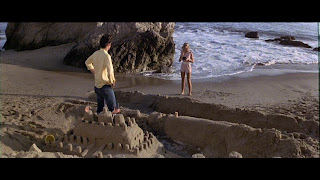A contemporary family-based TV situation comedy that could be compared to “All in the Family” would be Tyler Perry’s “House of Payne”. After screening “All in the Family” last week I could easily compare it with “House of Payne”, but there were definitely some differences from the two sitcoms.

First and foremost, I must express the similarities these sitcoms have in common with one another. “House of Payne” just like “All in the Family” has an insulting male, who is considered to be the head of household. Much of their dialogue expressed are used to insult others bringing laughter to the studio. Also, “All in the Family” had a woman character, which did the duties a woman in our society is constructed to do, so to speak. Take for example, “House of Payne”, similar to “All in the Family”, had the wife of the main character cleaning the house, tending to laundry, unemployed, and having to depend on the husband for family income. In addition, both sitcoms showed sides of American families not expressed daily in the media of their time.
However, these two sitcoms brought to light some differences that are barely talked about in today’s media world. The issue of race displays a tremendous difference in the issues that occur in the sitcoms. For instance, “All in the Family” was a middle-class white family that never seemed to deal with the problems of drugs, alcohol, or disconnecting families. They focused more on issues of their time like gay rights. Yet, on the other hand, “House of Payne” was a middle-class black family living in Atlanta that continues to try and keep the meaning of family, with one family member strung out on drugs, children living in a single-parent home, and uncertain job security.

Thus, “All in the Family” and “House of Payne” were well-established sitcoms that were not ideal to what we see on everyday networks. Today networks, such as BET, try so hard to play out stereotypes that it becomes demeaning and misunderstood by many of its consumers, for example the show "The Game". "The Game" capture many stereotypes about athletes, women, and ethnic cultures. Moving forward, we will begin to see more stereotypes emerge and networks down playing important issues, like racism or heterosexism. Media will continue to make an impact on future generations and they will discover the differences and similarities of the people of today’s society and in the past.


















